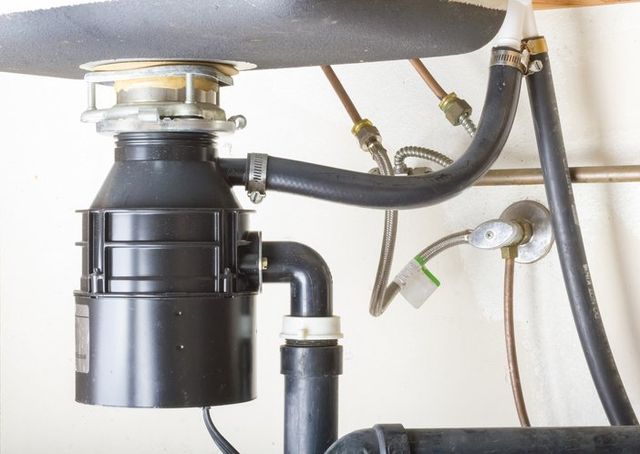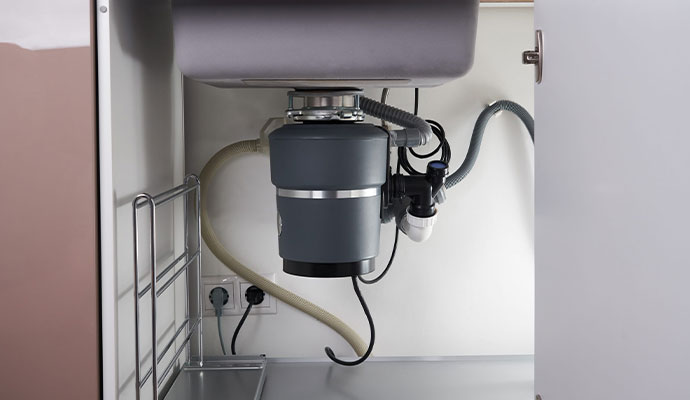Do you find yourself in search of details concerning Why Is My Garbage Disposal Leaking From the Bottom??

Waste disposal unit are necessary cooking area appliances that help in taking care of food waste successfully. However, a dripping waste disposal unit can be a frustrating and messy trouble to take care of. The good news is, lots of leakages can be repaired easily with a couple of basic actions. In this short article, we will certainly go over how to deal with a dripping garbage disposal properly.
Intro
Waste disposal unit are mounted under kitchen area sinks and are created to shred food waste into smaller sized pieces, enabling it to travel through the pipes system conveniently. While these tools are generally reliable, leakages can happen gradually because of deterioration, loose links, or damages to the unit.
Common Reasons For Leakages in Rubbish Disposals
Worn Seals and Gaskets
Seals and gaskets play an essential duty in protecting against water from leaking out of the waste disposal unit. Gradually, these components can degrade, resulting in leakages around the disposal device.
Loose Links
The connections between the garbage disposal and the pipes system can become loosened over time, triggering water to leak out during procedure.
Cracks or Holes in the Disposal System
Physical damages to the garbage disposal, such as fractures or holes in the real estate, can additionally result in leakages.
Determining the Source of the Leakage
Prior to trying to deal with a dripping waste disposal unit, it is vital to determine the source of the leakage. This can commonly be done via visual examination or by performing straightforward tests.
Visual Inspection
Evaluate the garbage disposal system thoroughly for any kind of signs of water leakage. Pay very close attention to areas around seals, gaskets, and connection factors.
Evaluating for Leaks
One method to examine for leakages is by running water with the disposal device and looking for any noticeable signs of leakage.
Devices and Materials Needed for Taking Care Of a Dripping Waste Disposal Unit
Prior to starting the repair service procedure, gather the required tools and products, including a screwdriver, adjustable wrench, plumber's putty, replacement seals or gaskets, and epoxy or patching material for repairing fractures or holes.
Step-by-Step Overview to Fixing a Dripping Waste Disposal Unit
Turn Off the Power
Prior to trying any kind of repair work, ensure that the power to the garbage disposal device is shut off to prevent the risk of electric shock.
Find the Leak
Determine the specific area of the leak and identify the cause.
Tighten Connections
Use a wrench to tighten any type of loose links in between the disposal device and the plumbing system.
Replace Seals or Gaskets
If the leakage results from worn seals or gaskets, eliminate the old elements and replace them with brand-new ones.
Patching Cracks or Openings
For fractures or openings in the disposal device, use epoxy or a suitable patching product to seal the damaged area.
Examining the Waste Disposal Unit After Fixing
When the repair is full, check the garbage disposal by running water with it to ensure that the leak has actually been solved.
Preventive Upkeep Tips to Avoid Future Leaks
To prevent future leaks, it is important to do routine maintenance on your garbage disposal. This includes keeping it clean, avoiding placing non-food items or tough things down the disposal, and periodically looking for leaks or various other concerns.
Conclusion
To conclude, fixing a leaking garbage disposal is a reasonably straightforward process that can be completed with basic tools and products. By following the steps described in this short article and practicing precautionary upkeep, you can maintain your garbage disposal in good working condition and avoid pricey repair services in the future.
What to Do About a Leaking Garbage Disposal
A leaking garbage disposal often goes unnoticed until you confront a sopping cabinet, a foul-smelling puddle, or an audible drip-drip-drip from the unit. The fix can be frustrating, too, because the leak can stem from a number of components in the system. Fortunately, with a little sleuthing, you can zero in on the leak and—depending on the exact location—stop the icky oozing and repair the component that caused it. Worst case scenario, if it turns out that the garbage disposal must be replaced, installing a new one is a reasonable do-it-yourself task for those with basic plumbing skills. Read on to keep the cash you’d otherwise hand over to a pro.
Prepare to find the leak
Prior to testing the garbage disposal for leaks, unplug it at the wall outlet and turn off the power from the breaker box to prevent electrical shock. Then insert a watertight sink stopper into your sink drain and wipe the unit dry with a clean cloth. In any handy container, mix a few drops of food coloring into a few cups of water, and pour the dyed water onto the sink stopper to help you locate the leak.
Investigate the source
the top, where the disposal meets the sink drain the side, where the dishwasher hose or main drain pipe connects to the disposal or the bottom of the unit Inspect each of these locations while gliding a light-colored rag over the unit; the dyed water will readily show on the rag and reveal the location of the leak. If a leak isn’t immediately apparent, remove the sink stopper and pour a few more cups of dyed water down the sink drain, then check for leaks again. Leaks near the top of the unit are more likely to show themselves while the sink is plugged, while side and bottom leaks are more noticeable while the sink is unplugged.
The metal sink flange that sits directly inside the sink drain is typically sealed around the top with plumber’s putty (a clay-like sealant) and then secured from under the sink with bolts. If the plumber’s putty deteriorates, or the bolts loosen, the flange can no longer form a watertight seal between the sink drain and the disposal—which could cause a leak at the top of the unit.
To reseal the leaky flange, you must first detach the garbage disposal. Start by loosening the screws securing the main drain pipe to the disposal, then loosen the screws in the metal clamp securing the dishwasher hose to the disposal and detach the drain pipe and dishwasher hose from the disposal. Loosen the screws in the mounting ring that connects the disposal to the metal mounting assembly beneath the sink, then pull down the disposal and carefully set it on a clean, dry surface. Loosen the bolts in the mounting assembly with a wrench, then pull down the mounting assembly and set it near the disposal.

Hopefully you liked our post about Why Is My Garbage Disposal Leaking From the Bottom?. Thank you for taking a few minutes to read through our blog. Appreciated our entry? Please share it. Let other people find it. Thanks for your time. Come back soon.
Call Today